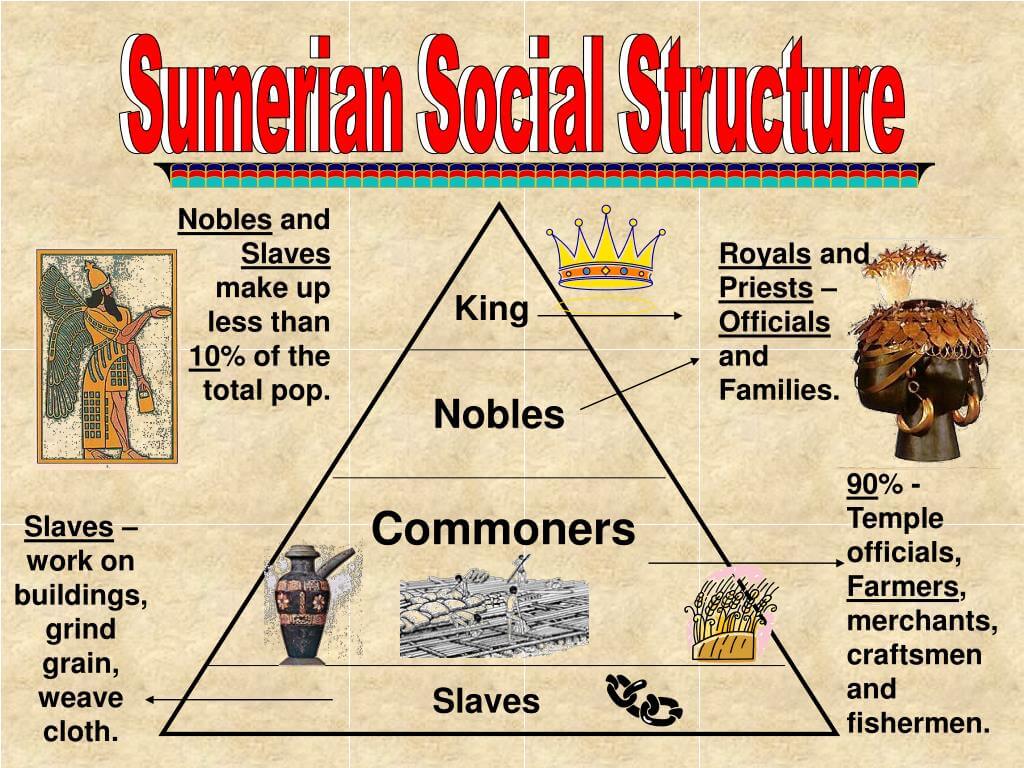The social structure of Mesopotamia was a complex web that defined the relationships among its inhabitants, influencing every aspect of their lives, from economic transactions to religious practices. This ancient civilization, often referred to as the "Cradle of Civilization," laid the foundations for modern society. Understanding the dynamics of Mesopotamia's social hierarchy offers invaluable insights into how early human societies organized themselves. This article delves into the intricacies of Mesopotamian society, exploring its various classes, roles, and the impact of geography and culture on its social fabric.
At the heart of Mesopotamian social structure was a rigid hierarchy that placed kings, priests, and nobility at the top, followed by merchants, artisans, farmers, and slaves. Each class had specific roles and responsibilities that contributed to the overall functioning of society. By examining this structure, we can appreciate the complexity of social interactions and the importance of each group's contributions to the civilization's prosperity.
Throughout Mesopotamian history, changes in power dynamics and external influences reshaped its social structure. The rise and fall of empires, such as the Akkadian, Babylonian, and Assyrian, introduced new elements into the social hierarchy. This article will explore the evolution of Mesopotamian social structure and its lasting legacy on subsequent civilizations, providing a comprehensive understanding of one of history's most influential societies.
What Were the Main Classes in the Mesopotamia Social Structure?
The Mesopotamian social structure consisted of distinct classes, each with its own functions and responsibilities. The primary classes included:
- Royalty and Nobility: This class included kings, queens, and high-ranking officials who held significant power and wealth.
- Priests: Religious leaders who performed rituals and maintained the temples, crucial for the spiritual life of the society.
- Merchants and Traders: Individuals who facilitated trade and commerce, contributing to the economy.
- Artisans and Craftsmen: Skilled workers who created goods ranging from pottery to textiles.
- Farmers: The backbone of the economy, responsible for food production and agriculture.
- Slaves: The lowest class, often prisoners of war or individuals sold into slavery, who performed manual labor.
How Did Geography Influence Mesopotamia's Social Structure?
Geography played a significant role in shaping the social structure of Mesopotamia. Situated between the Tigris and Euphrates rivers, this region benefited from fertile land, which allowed for agriculture to thrive. The availability of resources led to population growth, urbanization, and the development of complex societies. Key geographical factors included:
- Fertile Crescent: The rich soil supported agriculture, leading to surplus food production.
- Trade Routes: The location enabled trade with neighboring regions, fostering economic growth and social mobility.
What Role Did Religion Play in Mesopotamia's Social Structure?
Religion was a cornerstone of Mesopotamian society, deeply intertwined with its social structure. The priests held significant power, often acting as intermediaries between the gods and the people. Their influence extended to various aspects of daily life, including:
- Political Power: Many kings claimed divine authority, legitimizing their rule through religious endorsement.
- Social Order: Religious beliefs reinforced the social hierarchy, promoting obedience and stability.
How Did the Roles of Women Evolve in Mesopotamian Society?
Women in Mesopotamia held varying degrees of status and responsibility, often influenced by their social class. While men predominantly occupied positions of power, women could own property, engage in business, and participate in religious activities. Key points regarding women's roles include:
- Economic Participation: Women from wealthier families often managed businesses and estates.
- Religious Roles: Some women served as priestesses, gaining respect and influence within society.
What Were the Characteristics of Mesopotamia's Slavery System?
Slavery in Mesopotamia was a common practice, with individuals becoming slaves through various means, including warfare, debt, or birth. The characteristics of this system included:
- Types of Slaves: Slaves could range from skilled workers to household servants, depending on their abilities.
- Legal Rights: Although slaves had limited rights, they could sometimes buy their freedom or be freed by their masters.
How Did Trade Influence the Mesopotamian Social Structure?
Trade significantly impacted the social structure of Mesopotamia, facilitating interactions among different classes and cultures. Key aspects included:
- Economic Growth: Trade led to increased wealth for merchants and the urban elite.
- Cultural Exchange: Interactions with neighboring regions brought new ideas, technologies, and practices.
What Legacy Did Mesopotamia's Social Structure Leave Behind?
The social structure of Mesopotamia laid the groundwork for future civilizations, influencing governance, social organization, and cultural practices. Its legacy can be seen in:
- Social Hierarchies: The concept of social classes remains prevalent in many modern societies.
- Legal Systems: The Code of Hammurabi, a product of Mesopotamian society, established legal precedents that resonate today.
In conclusion, the social structure of Mesopotamia was a multifaceted system that shaped the lives of its people and contributed to the civilization's success. By understanding its complexities, we can appreciate the ingenuity and resilience of one of history's most significant cultures.



